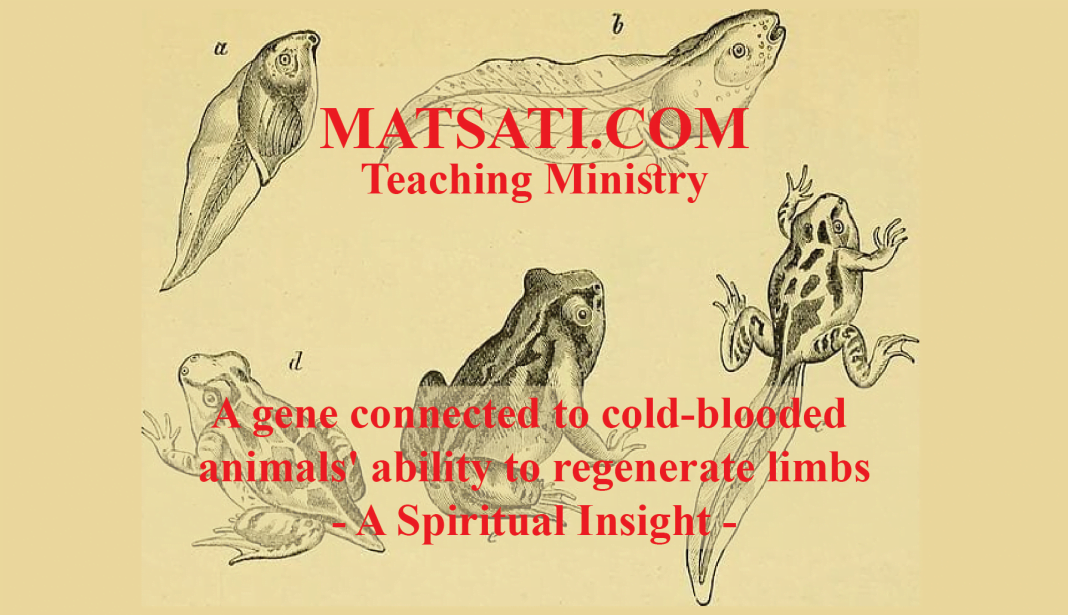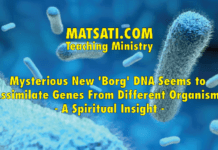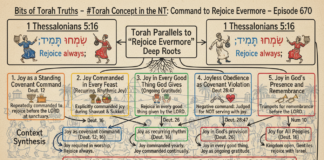DNA, gene function, proteins, each of these are related in the sense that one leads to the other. The sequence of the bases, A, C, G and T, in DNA determines our unique genetic code and provides the instructions and information necessary to produce molecules, cells, and general functionality of the human body. The cell reads the DNA code in groups of three bases. Each triplet of bases, also called a codon, specifies which amino acid will be added next during protein synthesis. There are 20 different amino acids, which are the building blocks of proteins. Different proteins are made up of different combinations of amino acids. This gives them their own unique 3D structure, unique folding, and unique function in the body. Scientists know all of these things concerning DNA, gene function, and proteins, however there remains a question as to the broader scope of functionality of genes, proteins, and gene sequences in the mechanisms that produce the physiological phenomenon that is observed in the body. For a particular animal, bodily function, and cell, some gene sequences will not produce the same results if we take a copy/paste approach to gene function. We saw this phenomenon while scientists were trying to use ultrasound to visualize the genes that turn on and off during tumor growth a few weeks ago. [1] Because of our limited knowledge, researchers studying the cold-blooded animals ability to regenerate limbs look for ways to understand gene function, specifically the functionality that gives tadpoles the ability to regenerate (regrow) amputated tails or limbs. The way scientists do this is by trial and error. The work begins by removing genes, block the expression of a gene, or over-express the gene in order to ascertain what happens. Scientists do this to understand which genes are the drivers for the regrowth of appendages in these animals. The scientists hypothesize that the loss of regeneration ability was caused by the loss of a gene called c-Answer, this work is reported in the October 22 Journal Cell Reports. [2]
References
- Ultrasound can ‘see’ when tumor cells turn genes on and off – A Spiritual Insight, https://www.matsati.com/index.php/ultrasound-can-see-when-tumor-cells-turn-genes-on-and-off-a-spiritual-insight/
- Daria D. Korotkova, Vassily A. Lyubetsky, Anastasia S. Ivanova, Lev I. Rubanov, Alexander V. Seliverstov, Oleg A. Zverkov, Natalia Yu. Martynova, Alexey M. Nesterenko, Maria B. Tereshina, Leonid Peshkin, Andrey G. Zaraisky. Bioinformatics Screening of Genes Specific for Well-Regenerating Vertebrates Reveals c-answer, a Regulator of Brain Development and Regeneration. Cell Reports, 2019; 29 (4): 1027 DOI: 10.1016/j.celrep.2019.09.038
The approach researchers chose to investigate this research began with something called bioinformatics. The team used artificial intelligence (AI) in bioinformatics, which is the science of collecting and analyzing complex biological data such as genetic codes. They used artificial intelligence (AI) to identify several genes that were not present when comparing warm-blooded vertebrates genome with the tadpole genome. The research was conducted on the DNA of African clawed frogs (Xanopus laevis), researchers used AI to identify the DNA patterns that were similar in chickens, and noted where the genome differed. Researchers then selected one of the frog specific genes which encoded for previously unknown transmembrane protein, and they called it c-Answer (cold-blooded animals specific wound epithelium receptor like) gene. The researchers then blocked the c-Answer gene expression in tadpole embryos. They discovered the tadpoles with c-Answer blocked would transition into frogs that could not regenerate amputated appendages. It was discovered that the c-Answer gene modulates two important molecular pathways that are common to all vertebrates. All they know is this loss of function may alter the functioning of these pathways leading to the inability to regenerate. In addition to this, the over expression of the c-Answer gene caused advanced brain growth and larger eyes. This suggest that c-Answer also modulates brain development. Those frogs who had the c-Answer gene blocked had smaller brains. This suggests that there is a lot about this gene that is yet to be understood and much work is needed in order to better understand the mechanistic pathways of the c-Answer gene to these other parts of the body (i.e. brain development). Note how this research reveals to us that advances in gene research will take many years before it would even be possible to apply this to humans!
The spiritual insights that we receive from this type of research is related to the method of bioinformatics and AI software that was used to identify the common genes expressed comparing cold-blooded and warm-blooded animal DNA. Researchers used the information to ascertain what genes to select, and the approach was to turn off the expression of certain genes and then observe the development of the tadpole into adults and to study the regeneration ability of the tadpole before and after the gene expression was turned off. A lot of what was discovered remains a mystery due to the complexity and nature of the scientific work, and the amount of information that is contained within the DNA, gene, and protein formation that affect the biological development pathways for brain growth, and limb regeneration, etc. I felt this is an interesting topic because of the way researchers used AI and bioinformatics to develop a new way to look at and compare the DNA for different species. This may be compared to the development of ways to understand the Scriptures, through systematic theology, which ultimately affects the way we express our faith, or of being faithful to the Lord according to His Word because systematic theology is used as a way to understand the Bible and teach people its meaning and purpose in our lives.
When we look at the period of time prior to the “church” age, the way the rabbis provided for a systematic way of organizing truth was by drawing upon the Torah. The rabbis were skillful in their exposition of Scripture, this allowed for much flexibility in interpretation and application of God’s Word that provided both strengths and weaknesses. This took the form of the Oral Tradition (Oral Torah, Mishnah). According to Jewish tradition, the Oral Torah was passed down orally in an unbroken chain from generation to generation until its contents were finally committed to writing following the destruction of the Second Temple in 70 CE when Judaism faced total extinction. To illustrate this point on interpretation, take the example of “fire.” Fire is a valuable thing for producing heat for our homes, energy for electricity generation, and for burning garbage. The problem is not with fire alone, but in allowing fire to get out of control it has the capacity to destroy. This was the major purpose for organizing truth by drawing upon the Torah and not varying much beyond the Peshat (simple) meaning of the Scriptures. (Something that always drew us back to the point and purpose of the Scriptures, the reason we were created, and God’s commands.) When the church age comes along, the development of systematic theology was created, to study the Bible and to understand what God says about a particular topic along with the introduction of Greek philosophy and logic. This brought stability in both thought and interpretation in the following ways. (i) It enriched our understanding of the text, (ii) it gave us an accurate theological grid, (iii) it identified doctrinal tensions, (iv) it helped harmonize the texts (v) it helped address contemporary issues, (vi) it helped to draw conclusions from the texts, (vii) it efficiently assemble the major motifs or themes taught throughout the Bible, (viii) it helped refute error, (ix) it helped us understand what the Bible teaches on a particular topic, and (x) it helped to determine the importance of a given doctrine within theology. A major problem however enters into the processes of systematic theology (ST), though ST may help enrich our understanding of the text, it might also distort our understanding because the method of interpretation is not always neutral and objective. ST may provide an accurate theological grid or it may create an inaccurate one due to what we see in history, for example the shift from Jewish to Gentile major in the church which led to a loss of understanding the Jewishness of the gospels which carried with it errors in interpretation and thought leading to doctrines such as Marcion, who as we know became the leader of an influential movement that viewed Torah as the dark teachings of the “Old Testament.” Marcion maintained that the Hebrew bible was legalism and that the Torah had been fulfilled and a new dispensation of grace had been inaugurated putting a negative twist upon the Torah of God. ST may identify doctrinal tensions, but it also may wrongly resolve them or create new ones. (i.e. Calvinism vs. Armenianism) ST can help harmonize the texts, or develop a Canon within a Canon, such as is the most common interpretative method on the NT where the NT is believed to supersede the Tanach (Torah, Prophets, Writings) as opposed to the Torah, Prophets, and Writings being the foundation stone upon which the NT stands. ST can be helpful to address contemporary issues, but it can also overlook and lead to conclusions such as a particular text being unimportant or not applicable, such as what we find today in Christianity major where the Torah takes the bottom seat in the daily study of the Scriptures. ST can help us to draw necessary and helpful conclusions but may also lead to irresponsible speculation and even heretical and dangerous doctrines. (i.e. hyper-grace, replacement theology, supersessionism, bilateral ecclesiology, etc) ST may be capable of drawing conclusions as to the ultimate purpose of Scripture, or it may irresponsibly emphasize parts of the bible where those who teach a particular theology pick and choose the parts that one wants to make based upon his/her theological flavor. ST may help refute error, or it may introduce error to a greater extent. These reasons are why it is so important for all of God’s people to read through the Scriptures (the Bible) cover to cover every year. Having a solid foundation in Scriptures is indispensable for tearing down erroneous doctrines. ST can help determine the importance of a given doctrine or theology, but these things are not automatically determined (not automatically generated) as a result and are heavily weighted towards one’s bias. Ultimately, ST may become a distortion of truth on how one interprets a particular text that leads to our understanding of the Scriptures and its place (application) in our lives due to the elimination of the Jewishness of the text. Studying the Jewishness of the Scriptures, when this is mentioned to most pastorate in the church, the knee jerk response is generally that “we don’t become Jews” as if that was the meaning of phrase “the Jewishness of the Scriptures?” This attitude of mind goes as far as to say if one chooses to follow the Torah and obey God’s Moedim, and to learn about the “Jewishness of the Gospels,” for the one who is non-Jewish, he is either trying to be Jewish or he believes that one becomes a Jew simply through the obedience of God’s Word. The modern Christian view is Paul removed the Yoke of the Torah by preaching against the Law (similar to Marcion). These conclusions and statements illustrate how Paul’s Words are being quoted through the distortions of Marcion who was both anti-nomian and anti-semitic. In these cases, it is important to remember what the Lord God says in the Torah “follow My commands and My statutes” (Parashat Bechukotai, Vayikra / Leviticus 26:3) these are His commands (God’s commands) that are given to His people. We are His people both Jew and Gentile. Obeying Torah in and of itself does not make a person Jewish. Obedience to God’s word is to bear His testimonies showing forth in our lives righteousness, justice, holiness and truth.
Systematic theology has led to the establishment of many doctrines central to Christianity, and it is important to understand philosophical implications or presuppositions that go into their development.
Our presuppositions are so pervasive that they lay below the threshold of our daily assumptions.
One of the problems of trying to ascertain the exact presupposition or mindset that goes into the development of a theology is that these presuppositions are so pervasive that it lies below the threshold of our daily assumptions. This makes detection of these things very difficult, and is the reason why it is important to begin studying the Scriptures, particularly the Torah, the Hebrew language, and the rabbis. Let’s use an example to illustrate why this is necessary from an Engineering perspective. Let’s take for example how geometry and the mathematics are necessary to describe a triangle. Centuries ago, scholars demonstrated mathematically the relations between the angles lengths of the sides, and dimensions of a triangle and how to solve the problem of the right-triangle as an example. Something to note here, it is only by “comprehending” the idea of the triangle, in which we see three lines making up the three sides of a two-dimensional object that we recognize the object and call it a triangle. We have to recognize first, that what we are looking at is a triangle, before we can classify if this particular thing that is on paper partakes of the essential properties of triangularity. This is an important concept, because it requires one to either reinvent the wheel from scratch using mathematics, or to be educated in mathematics and geometry to understand these concepts. This draws in the concept of education and how education literally means “the process of receiving or giving systematic instruction, especially at a school or university” and “an enlightening experience.” This literally means that being educated is the “leading out of the cave of ignorance.” So, being “educated” in the fields of mathematics and geometry, we see a triangle and instantly recognize the application of the properties of triangularity and the solutions thereof. For an engineer who has been educated in these things, the essential properties of triangularity lies below the threshold of daily assumptions in the sense that these things are all one can think about when presented with a triangle to seek a solution. (i.e. the engineer will look at a triangle and know exactly how to come to the solution by concrete and unchanging methods of geometry and mathematics.) This is what is meant by trying to understand the exact presupposition or mindset that goes into the development of a theology where these presuppositions are so pervasive that it lies below the threshold of our daily assumptions. We have been taught a particular way to read, to interpret, to understand, and to think in regards to the meaning of Scripture. In order to break out of this box we have placed ourselves into, we must begin by studying the Scriptures, particularly the Torah, the Hebrew language, and the rabbis. Think about this for a moment. Most of western thought, including ideas about language, logic, natural science, mathematics, ethics, jurisprudence, politics, theology, etc that we draw upon each day, which influences our lives and our decision make in what to do, have been taught and adopted into the educational curriculum of the west for thousands of years. So enormous of an obstacle this is and the influences that it has upon our minds and our lives, is that most if not all of these things accompany our daily assumptions while studying the Scriptures! As in the early church, when the general numbers of believers increased such that the gentiles outnumbered the Jewish believers, those men and women who were schooled in classical Greek thought (Hellanism), these basic assumptions the Greeks had on life, and death, and spiritual things were implicitly integrated into the earliest forms of Christian theology. This is why we can look at the Roman Church and see how they became a carrier of the legacy of ancient pagan thinking. The point is that as the church grew in numbers, and the Gentiles came in by the hundreds and thousands, the western church eventually absorbed as much from Rome and Athens as it did from Jerusalem.
Now the Hebraic mindset we find in the Torah, the Prophets, and the Writings (Tanach) does not concern itself with abstraction. We read in the Torah how God came down from heaven and the people had a divine encounter, which included dialog, phenomenological experiences, real life interactions with the power of God dwelling in the midst of His people, something that was beyond what the ancient Greeks were capable of understanding. To the Hebraic mind, time is rooted in the pages of the Scriptures from the historical experiences of the Exodus and the encounter with God at the mountain of Sinai, and during the moedim (appointed times). Note how in the moedim we literally put outselves into the lives of our ancestors experiencing the power of God through deliverance (Passover), the giving of His Word (Shavuot) and the dwelling of His presence in our lives (Succot). This is why it is so important to study the Word of God beginning with the Torah and coupled with the rabbinic literature, such that we get this sense of the layered meanings found within the Scriptures that focus upon action, truth, justice, faith, and faithfulness. This is why the Rabbis have been given to the condition of debate, discussion, dialog, and shared communal tradition. We see in the Talmud these discussions and the ongoing debate of the rabbis regarding the matters of the Torah along side of Midrash and the homiletic interpretation of Scripture. From the Hebraic perspective, our reality in this world is based upon the orchestration of a single all knowing all powerful omniscient and omnipresent Creator God who personally revealed himself to man through history, and personally wants to have a relationship with each and every one of us! This is not an abstraction as we find in the Greek philosophy. Our salvation is not just about having faith in Yeshua the Messiah, something that is on the inside only. This is an abstraction. Our salvation is pervasive, it flows throughout all of our lives, from faith, to being faithful in how we live, and serve, and love, and forgive, and show mercy, and humility, and in righteousness, holiness, justice, and truth. Note that this is not a gnostic concept that one must understand the Hebraic mindset in order to be saved, but that we in this present age need to be very careful what we choose to believe in, and to be repentant with the correct motivation to serve the Lord. Notice something, when Pontius Pilate asked Yeshua “What is truth?” Yeshua replied with silence. He did not come to speculate like Socrates or Plato, the Greek Philosophers, to speculate on abstractions of the meaning of truth. He came to make known our Father in heaven, and to show us the way saying “I am the way, the truth, and the life” (John 14:6). We look at the scientific research on regrowth of limbs and the genes that enable the animals bodies to do such things demonstrates a physical reality that we do not quite understand yet. This reminds us of the physical realities (outcomes) of something that is deep within us. The mystery of God dwelling in our midst, His Spirit living inside of us who believe! The truth of God is revealed to us in Yeshua the Messiah, his sacrifice, his death, his burial, his resurrection, and believing upon what He has done, revealing to us God’s love, justice, faithfulness, and holiness. The giving of God’s Spirit by faith in His Son demonstrates a physical reality and the power of God in our lives. He is the one who sustains all things, and for those who trust in him, he offers life everlasting, inexpressible joy, unsurpassed peace, love that surpasses all understanding, and the expectation of a future that is beyond imagination! Because of these things, and these promises, each of us should be very careful to draw near to the Lord by walking in His ways, believing in His Messiah Yeshua, and applying His Word to our lives! We also must be very careful about the theologies and doctrines that teach against God’s Torah, because these things lead to the way we live our lives in righteousness, holiness, justice, and truth. We are called to have faith, and to be faithful. Faithfulness is something that has not been emphasized very much today and this is due to the theologies and doctrines that have been developed using systematic theology. We must be aware of these things, and since the presuppositions that go into these theologies are so pervasive that it lies below the threshold of our daily assumptions, we must be aware of what we are being taught because this has a significant influence upon our salvation. (See Matthew 7)









